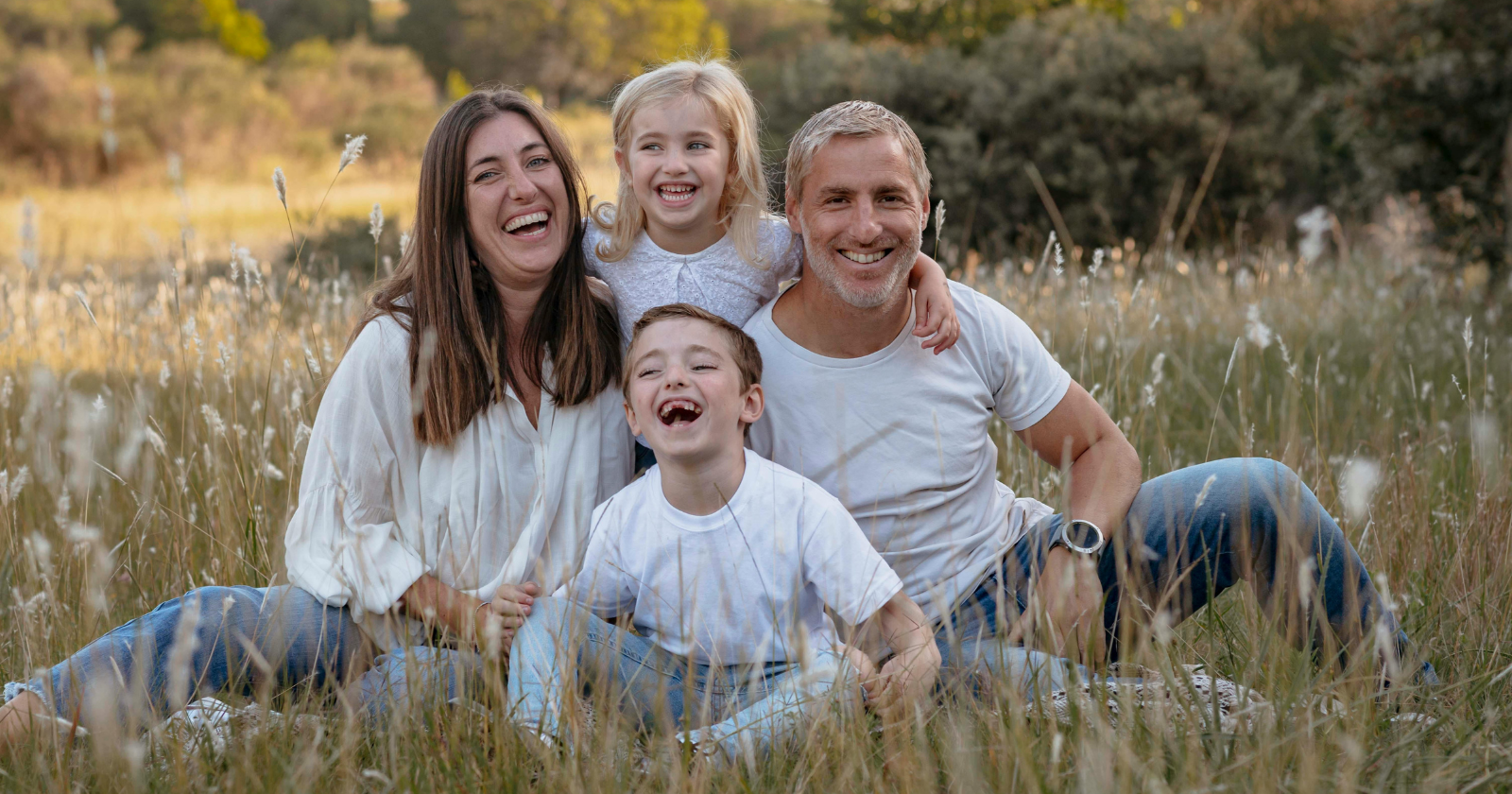Let’s face it, kids are basically social mirrors. They watch us closely, soaking in not just what we say but how we say it, how we treat others, and how we respond when life throws a tantrum of its own.
When I became a dad, I realized that my kids, Elise and Julien, weren’t learning “good manners” from my words nearly as much as from my tone when I was tired, my patience when traffic was crawling, and my reactions when Camille and I disagreed.
The small moments? They’re the real classroom.
So, let’s dig into seven social behaviors our kids learn by watching us and how to model them in everyday family life.
1. Emotional honesty
We talk a lot about emotional regulation, but here’s the thing: kids can’t regulate what they can’t recognize.
If we brush off our own emotions, they’ll learn to do the same. When we name them, “I’m feeling frustrated because we’re running late”, we teach them that emotions are signals.
As noted by Ailsa Lord, Child & Adolescent Counselling Psychologist, “Children learn ways of coping with emotions by watching how their parents do this, and by watching how the parent responds to their child’s own emotions”.
That one hit me hard. Because sometimes, when Elise melts down after a long preschool day, I’m tempted to say, “You’re fine.”
But when I slow down and say, “It looks like you’re tired and sad that the day is over,” she exhales. She feels seen. And that’s the root of emotional safety.
Modeling honesty doesn’t mean venting every frustration. It’s about being real without dumping. When we let our kids see us naming and processing feelings, they learn to trust theirs too.
2. Respectful communication
How we speak to our partner, the cashier, or the delivery driver sends daily messages about respect.
When we interrupt, roll our eyes, or raise our voices, our kids learn that’s how conflict sounds.
But when we stay calm even in disagreement, they learn that relationships can handle friction without flames.
One simple tweak that’s helped in our home: narrate the repair. If I snap at Camille out of stress, I’ll circle back within minutes and say in front of the kids, “Hey, I got short with Mom earlier because I was overwhelmed. That wasn’t fair.”
Apologizing doesn’t make us weak; it shows strength in accountability. And our kids pick that up faster than we think.
3. Empathy and perspective-taking
I’ll never forget one morning when Elise saw Julien crying and quietly fetched his pacifier. No prompting, no instruction, just instinct.
Moments like that remind me that empathy grows when it’s modeled, not mandated.
We show empathy when we pause instead of judge, when we say, “That must’ve been hard,” or “Tell me more.”
The more we practice compassion out loud, the more our kids connect the dots between emotion and action.
In Laughing in the Face of Chaos, Rudá Iandê writes, “When we stop resisting ourselves, we become whole. And in that wholeness, we discover a reservoir of strength, creativity, and resilience we never knew we had.”
His insights reminded me that empathy isn’t just about understanding others; it’s about accepting the full range of our own humanity.
Kids who see that in their parents learn that kindness and self-acceptance come from the same place.
4. Managing conflict with calm
Conflict happens. Whether it’s siblings fighting over toys or parents disagreeing about bedtime, kids absorb how we handle tension.
When Camille and I are mid-disagreement and I feel myself heating up, I’ve learned to say, “Let’s pause this for ten minutes.”
That small move models emotional regulation far better than trying to “win” the argument.
Dr. Daniel J. Siegel, author of The Whole-Brain Child, calls this the “name it to tame it” approach: “Helping children name their feelings (‘name it to tame it’) when they’re upset can help them calm down and learn to regulate emotions”.
If they see us doing the same, labeling emotions and taking breaks, they’ll learn conflict doesn’t have to be scary.
It can be an opportunity to connect and problem-solve.
5. Generosity and gratitude
Every night before bed, Elise and I do “three good things.” She lists what made her smile that day, sometimes it’s the playground, sometimes it’s mac and cheese. Then I share mine.
It’s simple, but it rewires both of us to notice goodness.
Kids don’t naturally learn gratitude from reminders to “say thank you.” They learn it from seeing appreciation in action, when we thank each other for cooking dinner, when we donate toys together, when we write a quick thank-you note.
Generosity is about time, energy, and attention. And gratitude, when modeled daily, shapes empathy, patience, and social awareness, the glue of healthy relationships.
6. Boundaries and respect for self
Do you ever feel guilty saying “no” to your kids? Me too. But I’ve realized that boundaries are maps. They show kids where respect begins and ends, both for others and themselves.
When I say, “I can play after I finish this call,” I’m not rejecting Elise; I’m modeling time management and self-respect.
Kids who see parents protecting their own needs learn that it’s okay to do the same.
This is something I’ve been reflecting on since reading Rudá Iandê’s work again. He reminds us, “Being human means inevitably disappointing and hurting others, and the sooner you accept this reality, the easier it becomes to navigate life’s challenges.”
That hit home as a parent. Because setting limits will sometimes upset our kids, and that’s okay.
They’re learning that love and boundaries can coexist. In fact, they strengthen each other.
7. Joyful authenticity
Here’s a question I’ve been asking myself lately: what if the best gift we give our kids isn’t perfect parenting but authentic living?
When Elise watches me dance in the kitchen (badly) or sees Camille laughing after a long day, she’s learning that joy doesn’t have to wait until everything is “done.
When Julien sees me mess up a DIY project and laugh instead of curse, he’s learning that mistakes aren’t shameful; they’re part of the creative process.
Authenticity breeds resilience. Kids raised by parents who show up as real humans, not flawless role models, grow up believing they can too.
They learn that life is about showing up honestly, even when things are messy.
And honestly, that’s what I hope my kids remember most: not that we had a spotless house or perfectly balanced days, but that our home was filled with laughter, warmth, and grace for the imperfect moments.
Because that’s where real connection lives.
Bringing it all together
If I could sum up what my kids have taught me so far, it’s this: they don’t need perfect parents; they need present ones.
They’re not listening for lectures on empathy or respect; they’re watching how we handle the everyday grind, the small frustrations, the shared laughter, the good-night hugs even when we’re running on fumes.
So next time you catch yourself wondering if you’re teaching enough, remember: you already are.
Every patient pause, every apology, every laugh at your own expense, it all adds up. It’s shaping their emotional literacy, their relationships, their sense of safety in the world.
And when they grow into adults who can name their feelings, set healthy boundaries, and love with empathy, that’s when we’ll know they were watching and learning all along.
Final thoughts
I’ll be the first to admit, I’m still figuring this out. Some days I nail it; other days I lose my cool before breakfast.
But what keeps me grounded is remembering that growth isn’t linear, for us or for them.
Parenting is about presence. It’s about modeling curiosity, emotional honesty, and resilience in the mess of everyday life.
So here’s to raising kids who are well-adjusted not because they had perfect parents, but because they had real ones, parents who showed them what it looks like to feel deeply, love generously, and keep showing up.



